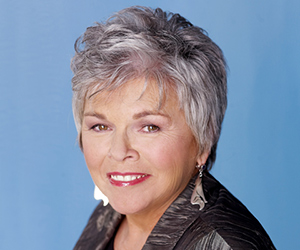Roberta Jamieson is the president and CEO of Indspire. Her organization has been advocating for, and supporting, equitable, accessible and culturally relevant education for Indigenous youth for more than 30 years. Dr. Jamieson also is one of the keynote speakers at Converge 2017, which brings together thought leaders from across the country to explore what Canada could look like in the next 50 years. The event, organized by Universities Canada, takes place Feb. 6 and 7 in Ottawa. In the lead-up to the event, University Affairs asked Dr. Jamieson what she sees for the future of Canada and the place of Indigenous youth within it.
University Affairs: Can you tell us what Indspire does?
 Roberta Jamieson: We invest in the education of Indigenous people, with financial and other support, so our young people can realize their potential and benefit themselves, their communities and Canada. We serve First Nation, Inuit and Métis people across Canada and work on awareness and sharing resources to close the gap in Indigenous education.
Roberta Jamieson: We invest in the education of Indigenous people, with financial and other support, so our young people can realize their potential and benefit themselves, their communities and Canada. We serve First Nation, Inuit and Métis people across Canada and work on awareness and sharing resources to close the gap in Indigenous education.
UA: What Indspire programs focus on postsecondary education?
RJ: Financial resources are the number one barrier our students cite for their inability to achieve a postsecondary degree or any training beyond high school. There’s a myth out there amongst Canadians that Indigenous students have their education fully funded but that’s not true. There is some funding for some students who meet certain criteria with respect to Indigenous status, but it’s not nearly enough. Last year, we provided almost 3,800 bursaries worth a total of $12.2 million. However, we only met 11 percent of the needs of the students who came to us for support. At one time, you had to sign away your status to achieve a postsecondary degree, and we all know about residential schools and the many obstacles and the historical legacy our students are faced with. I think there’s a solid case that extra measures should be taken.
UA: What other barriers, besides financial, does this group face in getting an education?
RJ: There is systematic racism, and it’s seen in all manner of forms, from very blatant to subtle. From a young age, students are exposed to curriculum materials that don’t reflect who they are. If you don’t see your culture validated, it’s very difficult to continue to embrace a system that doesn’t embrace you. Students also need role models. When I went off to university, if I had not been able to find other Indigenous students who understood my world view and the pressures that are unique to Indigenous students, I very likely would not have graduated. Back when I was in law school, I was told that the Queen owned all the land. But every Six Nations person knows that’s not true. I had to go home and think about the fact that the reality was different here at university.
UA: Some of these barriers impact education long before postsecondary education, right?
RJ: Changing K-12 outcomes is so important. That’s where the university student of tomorrow comes from. We need to change the high school graduation rate: only four out of 10 Indigenous students graduate from high school. Role models are so important for this age group, that’s why we do things like broadcast the Indspire Awards nationally. And we run a youth conference every year to talk about staying in school and showing them how they can be a catalyst in their community for change.
UA: What can universities do to better support Indigenous students?
RJ: Universities need to be a more welcome place for these students. I’m really pleased to see schools creating Indigenous student centres. These are places students can go to meet each other, share ceremonies and meet elders. Also, schools need to understand important cultural imperatives. When someone dies, there’s a 10-day bereavement period. This is not optional. We need more indigenous people on boards, as professors.
UA: When you “Indigenize” the university, what are the benefits for other Canadians?
RJ: It gives us a fuller and more balanced view of the history of Canada. It can open minds to Indigenous approaches to science, traditional health, conflict resolution and stewardship of the land. Any area of academic study that you can imagine, there is an Indigenous dimension that can enrich it. Also, Indigenous youth are the fastest growing demographic in the country. The National Aboriginal Economic Development Board estimates that if barriers were removed to allow Indigenous people access to education and the economy, Canada’s GDP would get a $28-billion boost. So this makes good business sense as well.
UA: Truth and reconciliation has become a topic of public conversation. Is this leading to more change?
RJ: I think conversation is good but I’m very practical and I’m interested in action. It’s not a mystery what we must do. We are moving in the right direction but we have much more to do and we need vigourous, concentrated, sustained work in our reconciliation efforts. It’s not a theme for a year. We need more than that to build a future together – a shared future.